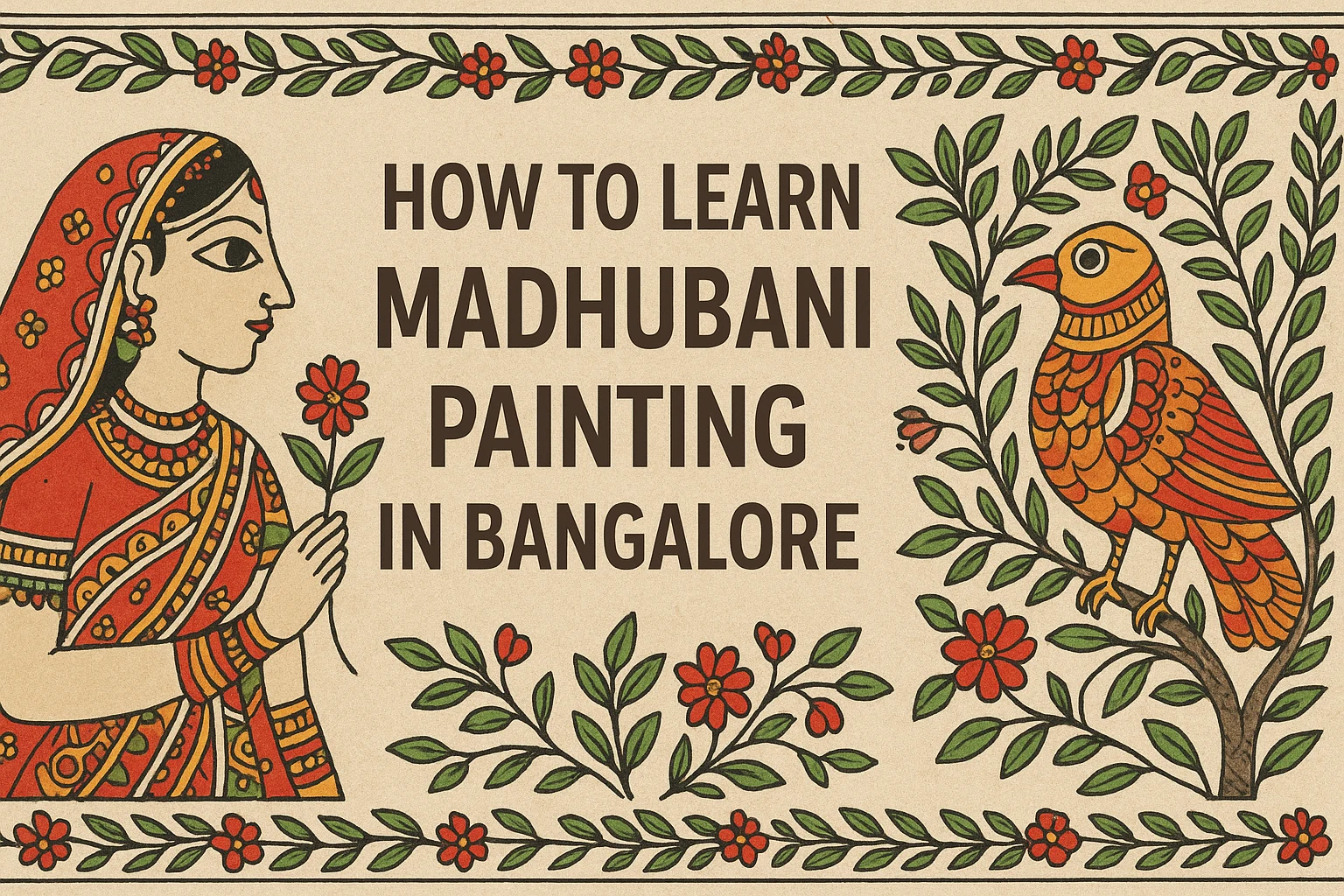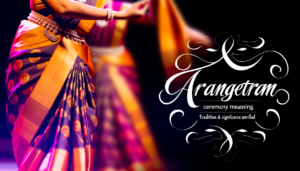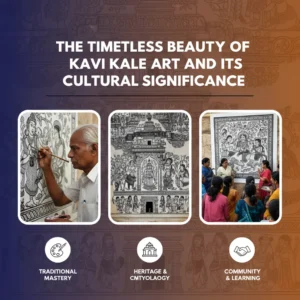Madhubani Painting – A Timeless Art of India
Madhubani painting is one of the most celebrated traditional art forms of India, admired for its intricate patterns, vibrant colours, and deep cultural significance. Over centuries, this art has not only preserved stories of mythology and folklore but has also become a medium of personal and social expression. Today, enthusiasts from across the globe search for how to learn Madhubani painting, study its history, and admire Madhubani painting designs and even the beauty of Madhubani painting saree collections.
At Kailasakaladhara, we take pride in preserving such heritage arts by offering structured learning, workshops, and training for passionate learners in Bangalore.
What are the Types of Madhubani Painting?
Madhubani painting has evolved into distinct categories, each with its own unique identity:
| Type of Madhubani Painting | Key Features | Themes |
|---|---|---|
| Bharni | Bright colours, filled motifs | Hindu deities, festivals |
| Kachni | Fine lines, detailed patterns | Nature, rituals |
| Tantrik | Inspired by Tantra symbols | Yantras, deities |
| Godna | Tattoo-style outlines | Tribal life, symbols |
| Kohbar | Wedding art, symbolic | Love, fertility |
Each type allows artists to express their vision in a different way. For example, Bharni is highly decorative, while Kachni relies on monochrome intricacy.
Who is the Father of Madhubani Painting?
When discussing the “father of” Madhubani painting, many art historians refer to the collective heritage of the women of Mithila, Bihar, who nurtured and preserved this art across generations. However, Sita Devi, a Madhubani painting famous artist, played a key role in bringing this folk art to global recognition. She, along with other pioneers, ensured that Madhubani found a respected space in modern art circles.
Alternative Name and Origin of Madhubani Painting
Madhubani painting is also known as Mithila painting, named after the Mithila region of Bihar where it originated. Its history dates back to the time of the Ramayana, where King Janaka is believed to have commissioned artists to create paintings during the wedding of Sita and Rama.
This alternative name, Mithila painting, reflects its deep cultural and geographical roots, keeping alive the traditions of storytelling through visual art.
The Main Characteristics of Madhubani Painting
Madhubani painting has unique traits that make it instantly recognisable:
-
Natural Colours – Traditionally, artists used turmeric, sandalwood, indigo, and other organic extracts.
-
Double Lines & Borders – Designs often include bold double lines filled with cross-hatching.
-
Mythological Themes – Stories of Krishna, Rama, Shiva, Durga, and Ganesha are widely depicted.
-
No Empty Space – The entire canvas is filled with patterns, flowers, and motifs.
-
Symbolism – Fish, peacocks, sun, and trees often represent prosperity, love, and growth.
These features make Madhubani painting not just an art form but also a symbolic language.
Learning Madhubani Painting Today
If you’re wondering how to learn Madhubani painting, the process can begin with simple outlines, progressing into complex designs. Beginners often start with basic Madhubani painting images of peacocks, flowers, or deities before moving on to intricate Madhubani painting designs.
Workshops at places like Kailasakaladhara in Bangalore provide structured lessons, guiding learners step by step while also explaining the cultural roots.
Madhubani Painting Designs and Inspirations
From Radha-Krishna scenes to the Tree of Life, Madhubani painting designs continue to inspire fashion, decor, and lifestyle. A popular trend today is the Madhubani painting saree, where traditional motifs are hand-painted on silk and cotton fabrics, creating a wearable masterpiece.
Such designs are not only appreciated in India but also globally, making Madhubani a living art form that blends tradition with modern appeal.
Madhubani Painting Famous Artists
Several artists have kept the flame of Madhubani alive, including:
-
Sita Devi – Pioneer in popularising Madhubani worldwide
-
Mahasundari Devi – Padma Shri awardee known for her storytelling artworks
-
Baua Devi – Renowned for her spiritual and symbolic themes
Their works have been exhibited globally, inspiring countless learners and admirers.
Why Madhubani Painting Matters Today
This art is more than just visual beauty—it is a cultural legacy. Whether seen in Madhubani painting saree collections, wall art, or everyday decor, it continues to remind us of India’s heritage.
At Kailasakaladhara, our goal is to encourage more people to learn this timeless art form and carry forward its essence.
Conclusion
Madhubani painting stands as a shining example of India’s folk traditions, symbolising unity, culture, and creativity. From learning its types and origins to appreciating its designs and famous artists, every element of this art tells a story worth preserving.
If you wish to explore or learn Madhubani painting, you can connect with Kailasakaladhara, with branches in Haralur, Jayanagar, BTM Layout, Hongasandra, and Chandapura.
For more details, visit 👉 https://kailasakaladhara.com/
FAQs on Madhubani Painting
Q1. What is the alternative name of Madhubani painting?
It is also known as Mithila painting, originating from Bihar.
Q2. Who is the most famous Madhubani painting artist?
Sita Devi is one of the most famous Madhubani painting artists.
Q3. What are the main features of Madhubani painting?
It uses natural colours, double lines, symbolic motifs, and has no empty spaces.



